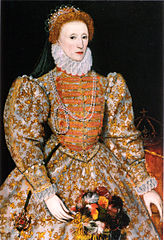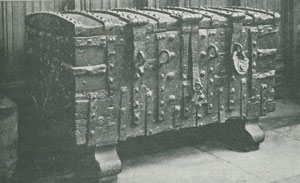Parish registers are the official church records of baptisms, marriages & burials. On the 5th of September 1538, Thomas Cromwell, chief minister of Henry VIII, declared that parish registers must be kept in England and Wales. He ordered every parson, vicar or curate to record each baptism, marriage and burial that took place in their church. In Scotland, parish registers were not kept until circa 1660.
What’s in a parish register
Early registers
The information recorded would be very minimal, for example often as little as: Married 2 June 1605 Francis Waters and Mary Duke. However some clergy were even lazier, so you may not even get a date, and sometimes they didn’t even bother to record the marriage at all. These early records would usually be written in Latin, even as recently as 1733.
From 1754
The abode of the bride and groom should be added e.g. Married 5 April 1683 James Blagg yeoman of Canterbury and Lucy Field widow of this parish.
From 1837
Both partners age and occupation should be recorded, as well as the names and occupations of their fathers.
Surviving parish registers
1538-1558

Noted archivist F.G. Emmison suggests in his book Archives and Local History that there are likely fewer than two hundred original registers surviving from this date. This is because the registers were originally kept on paper, sometimes just as loose sheets, and were often lost or damaged. In 1598 Queen Elizabeth ordered these registers to be copied into parchment books, giving clergy the option of either starting from their beginning in 1538, or from the first year of her reign, which was 1558. Of course most transcribers chose the easiest route, and copied the registers over starting in 1558, meaning the end for a large chunk of 20 years worth of marriage records. Of these 1598 transcriptions, there are thought to be between 650 and 1250 still in existence from the 11000 or so parishes that were in England at this time.
1558-1598
There are thought to be less than 2500 parish registers still existing from this period (from roughly 11000 parishes).
1598-1641
In 1598 Queen Elizabeth approved the aforementioned mandate that would make parish registers much better preserved. Registers were ordered to be stored in a parish chest locked with three keys, each key held by a different person, such as a minister or warden. It was also decided that transcripts of each register should be sent to the diocesan registry each year. Both measures mean there is a marked improvement in the availability of registers from this date on.
1641-1660
There are few complete parish registers from between 1641 and 1660, because of The English Civil War and the later Interregnum period. The turbulent times meant more records were destroyed, and fewer kept in the first place.
1660 onwards
Some parishes were slower than others to resume normal record keeping after The Civil War, so there may still be many gaps as late as the 1680s. Even well into the 1800s registers could disappear easily, perhaps at the whim of a vicar chucking them onto the fire in winter (there are records of this happening, probably more than once too), or in one case in 1824, an archdeacon borrowed a register and never returned it.

As late as the 20th century parish registers could still be found in a chest in a parish church. Unfortunately this wouldn’t always leave the records in good condition. As caring for our historical documents became more important, The 1978 Parochial Registers and Records Measure was passed, and stated that all church records over 100 years old must be stored at a local record office, unless the church had suitable facilities. Therefore most parish registers are now found in the county record office, although some still exist in universities and larger churches.
Where to find the parish registers
Throughout the centuries some parishes have changed counties, or become amalgamated with other parishes, meaning it’s not always obvious where those registers are now kept (should they even exist). If you’re not sure where to look, try one of these options:
- Contact the county record office geographically closest to the parish in question. They are usually happy to help with such queries, and should be able to tell you whether they have the register for a particular period. If they don’t have anything, or aren’t sure then you can always try the next nearest record office.
- There are many genealogy websites, all of which have parish registers for certain parishes and periods. You can browse some of them for free.
- If you are particularly interested in the history of parishes, or are tracing several ancestors then you should consider buying The Phillimore Atlas and Index of Parish Registers*.
It will tell you what registers are known to still exist, and also has county maps, parish maps, and topographical maps for the 1830s & earlier. It will save you countless hours trying to find out where registers relevant to your family are kept. The book has excellent customer reviews and is well worth the money.
Finally, don’t forget to read these tips to aid your marriage search. Good luck!
